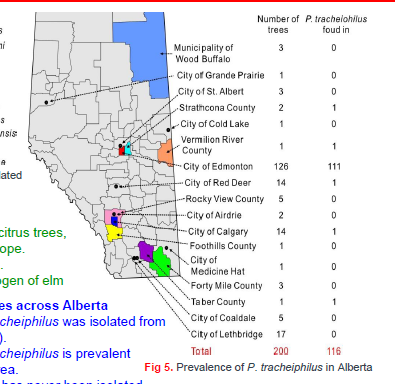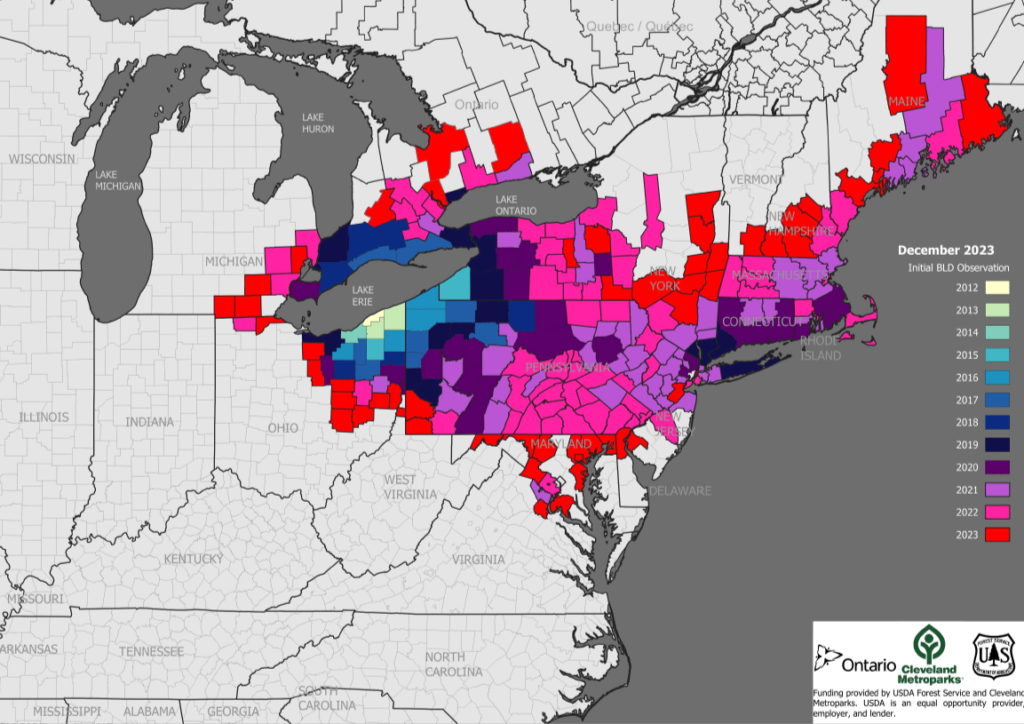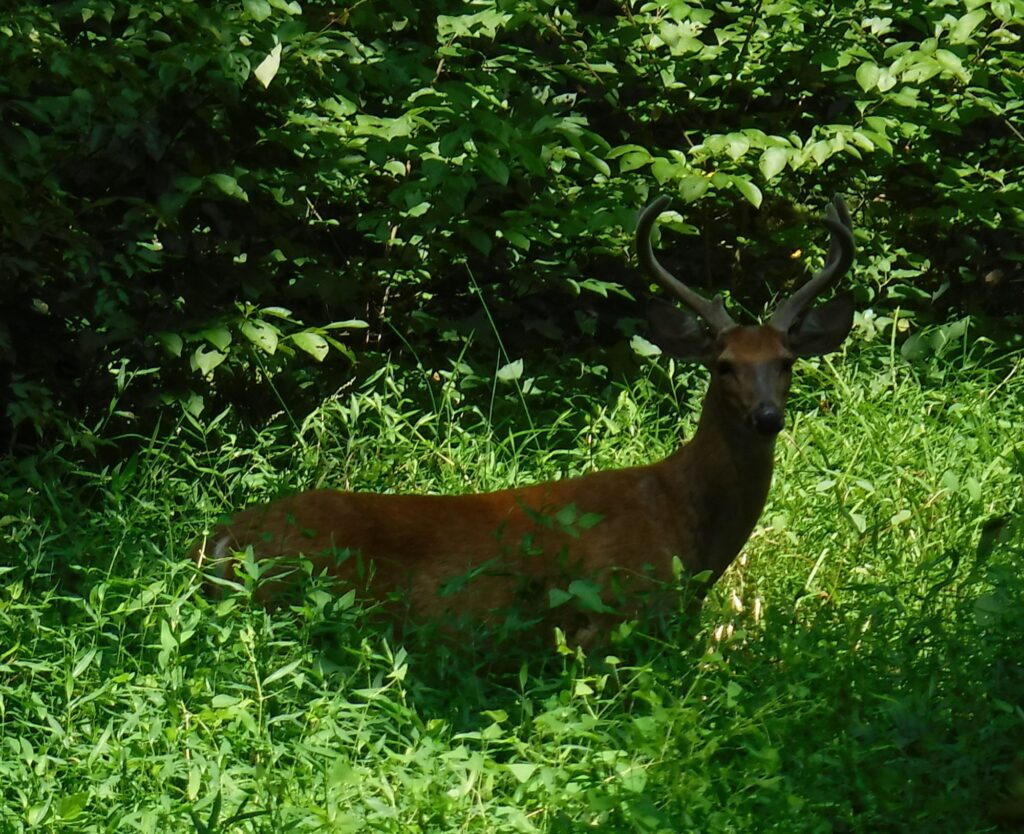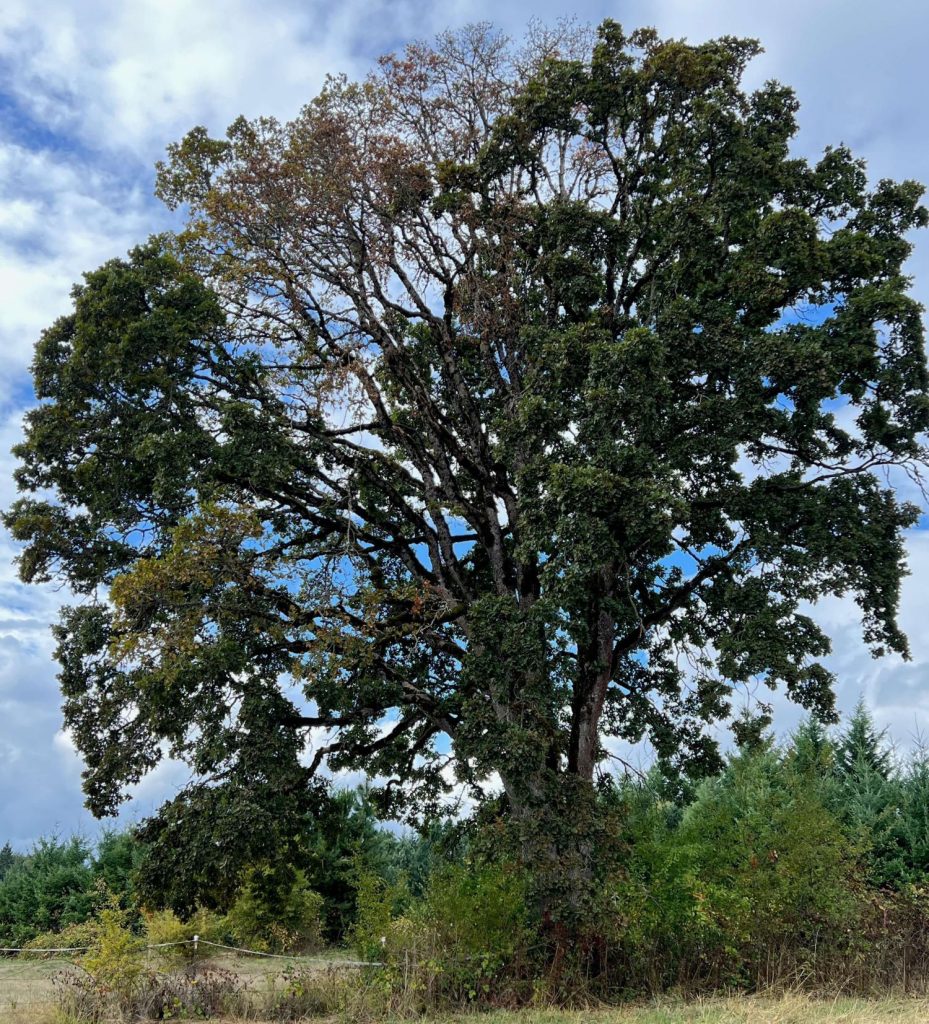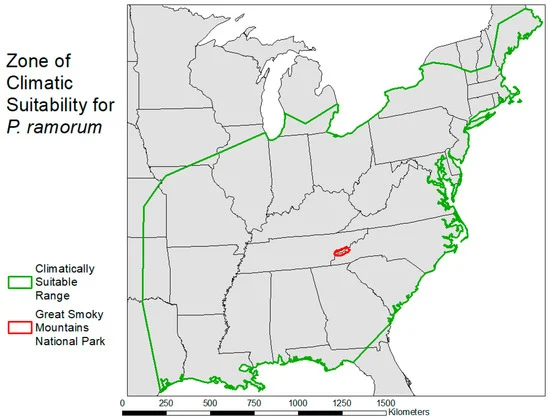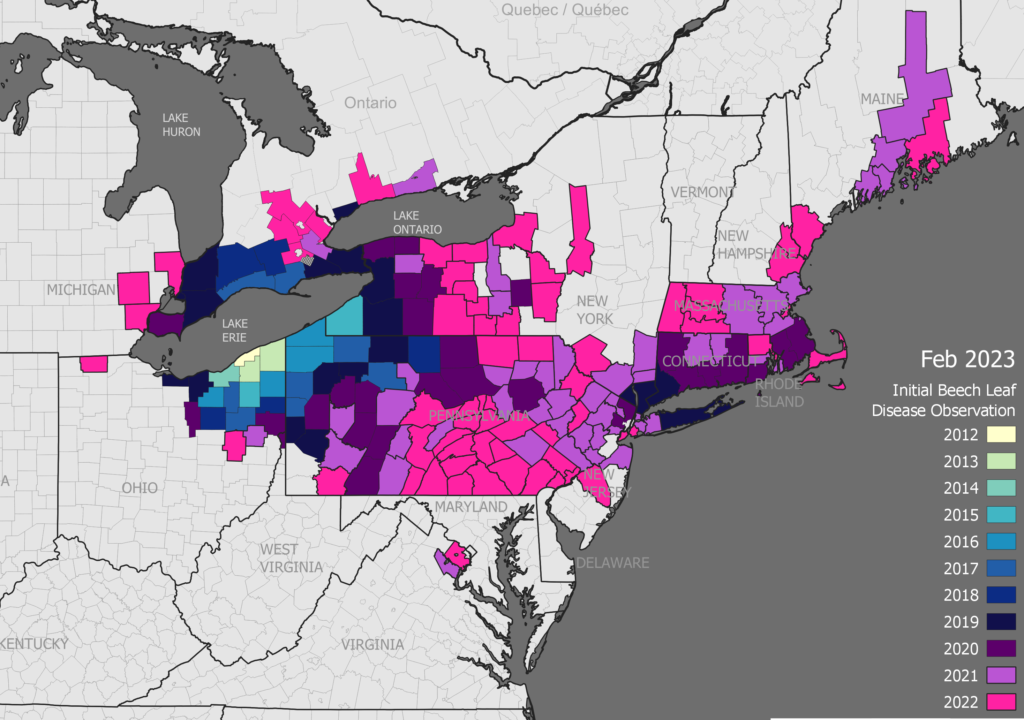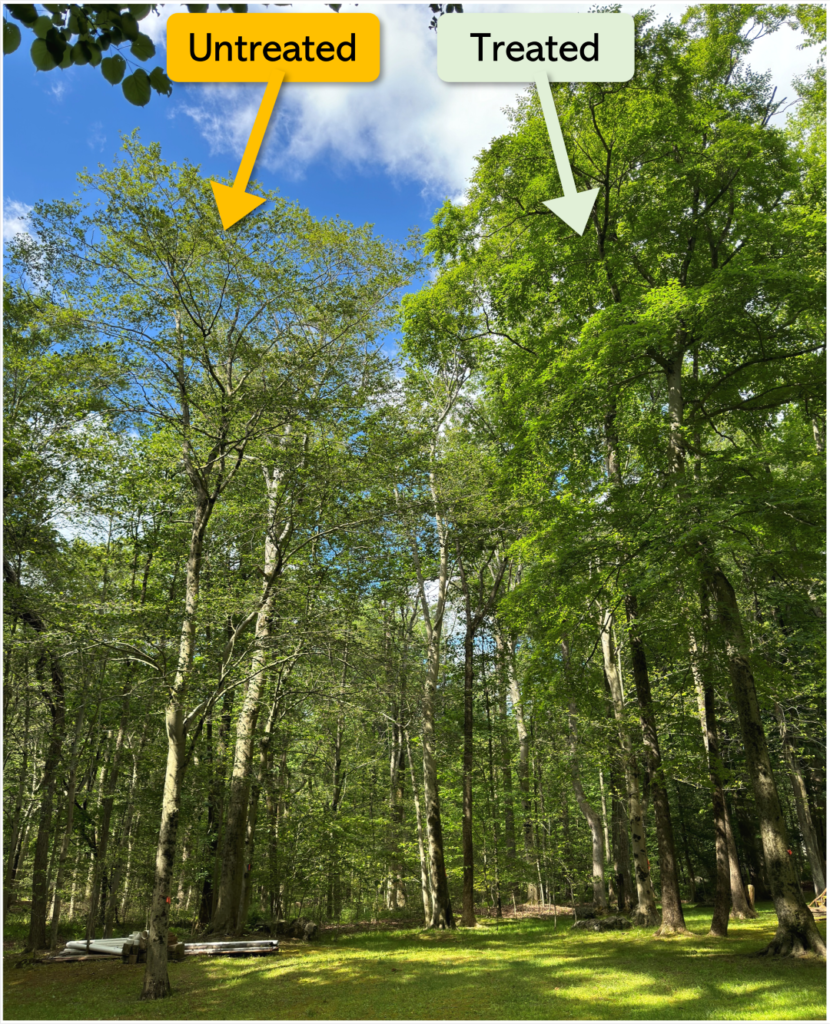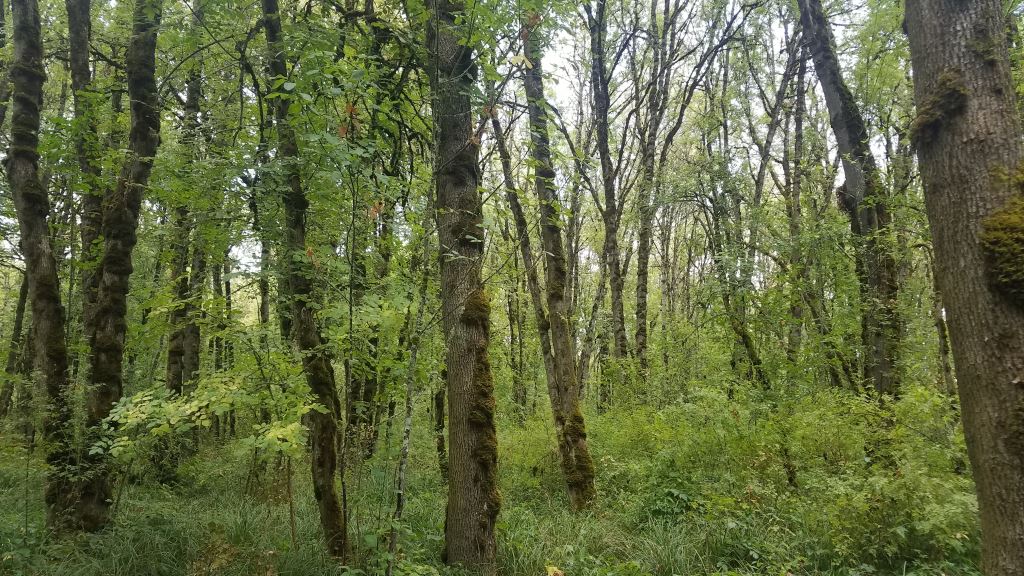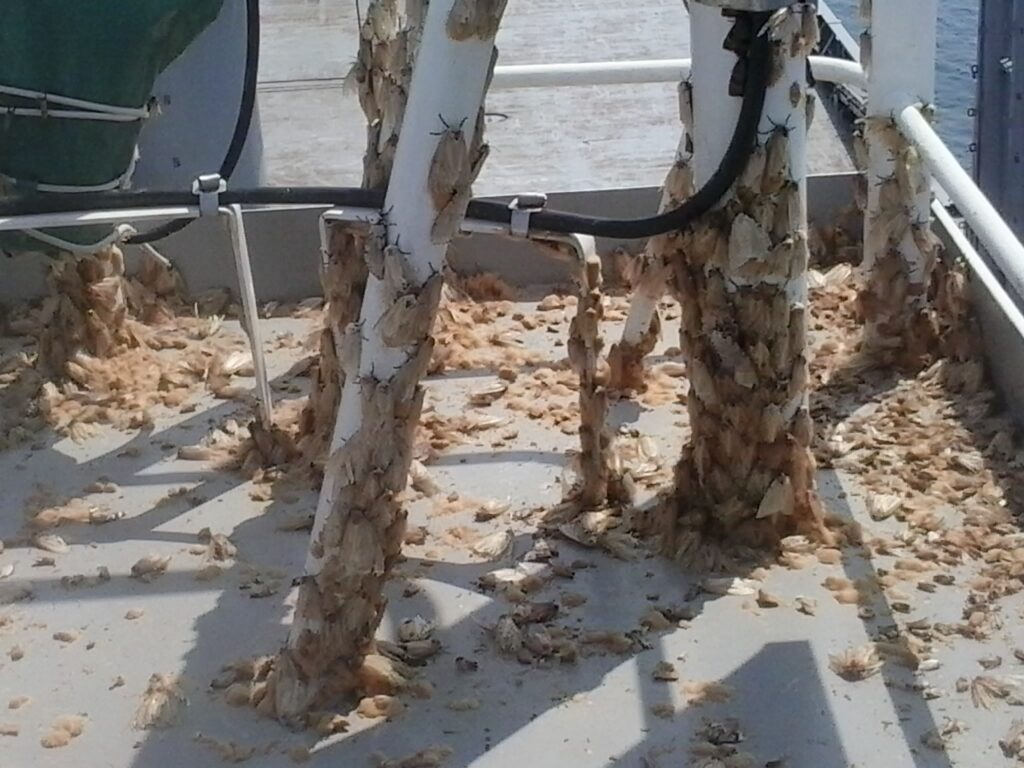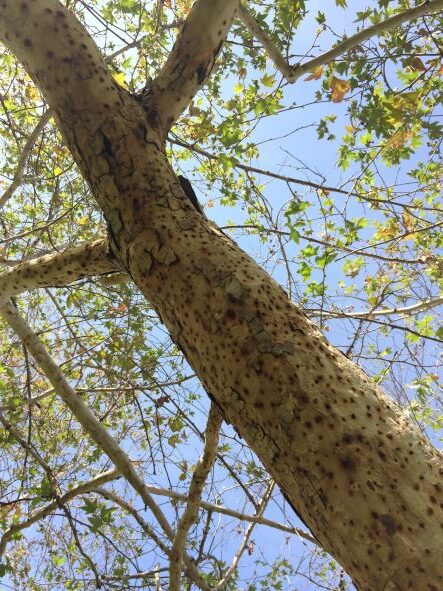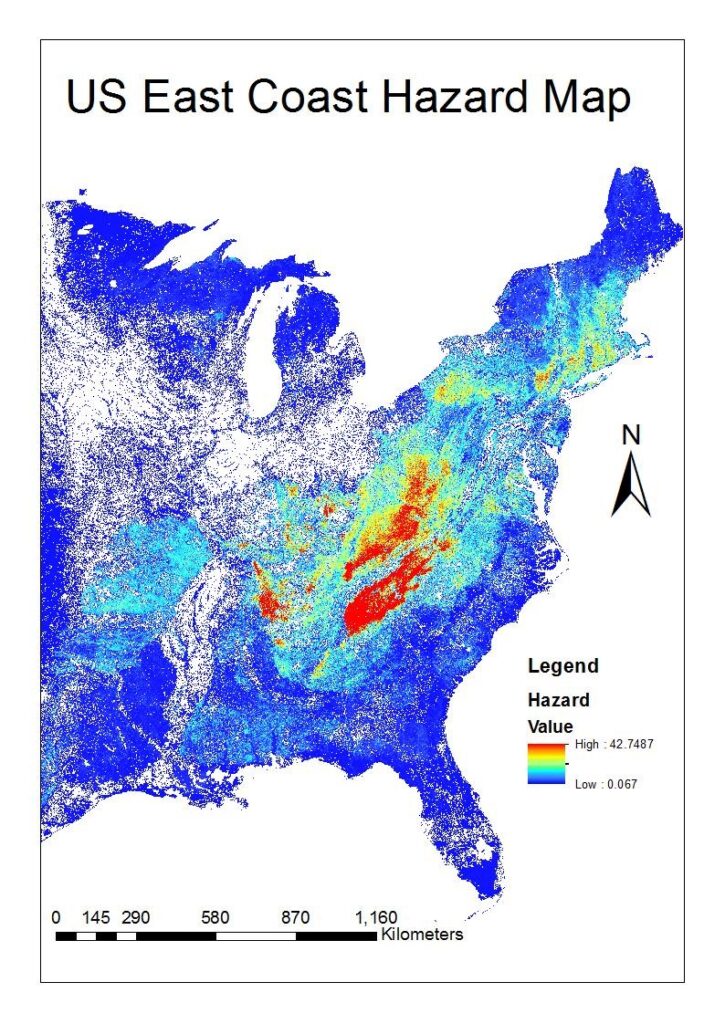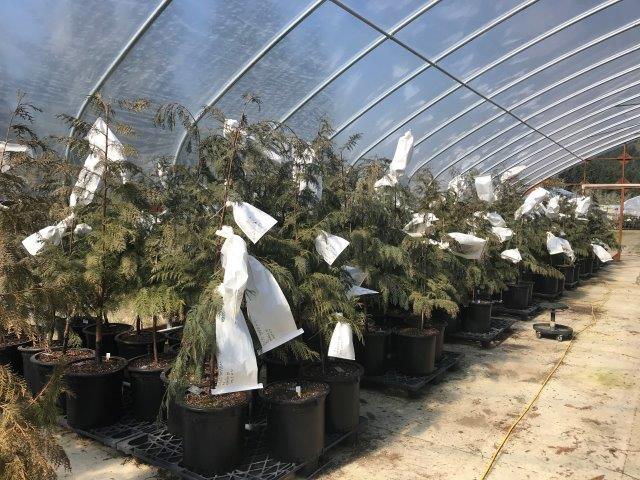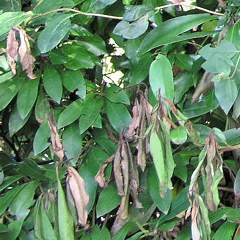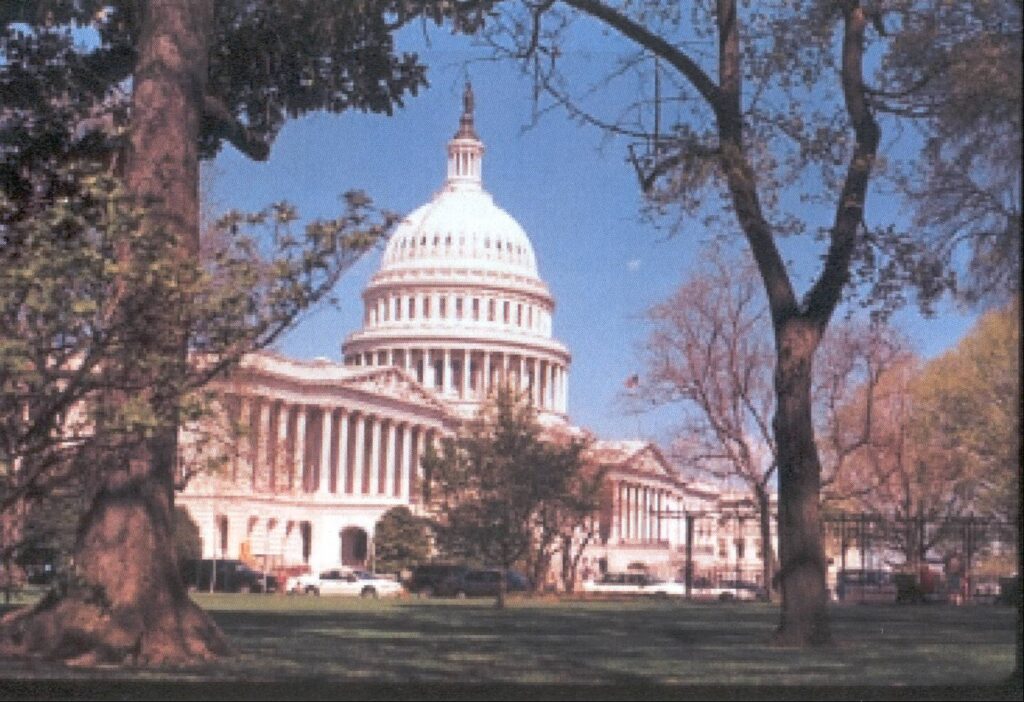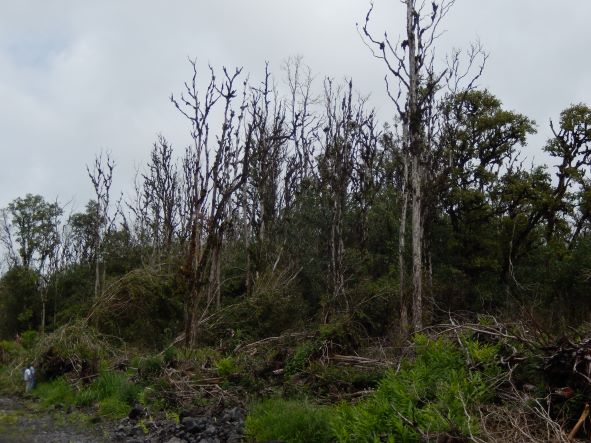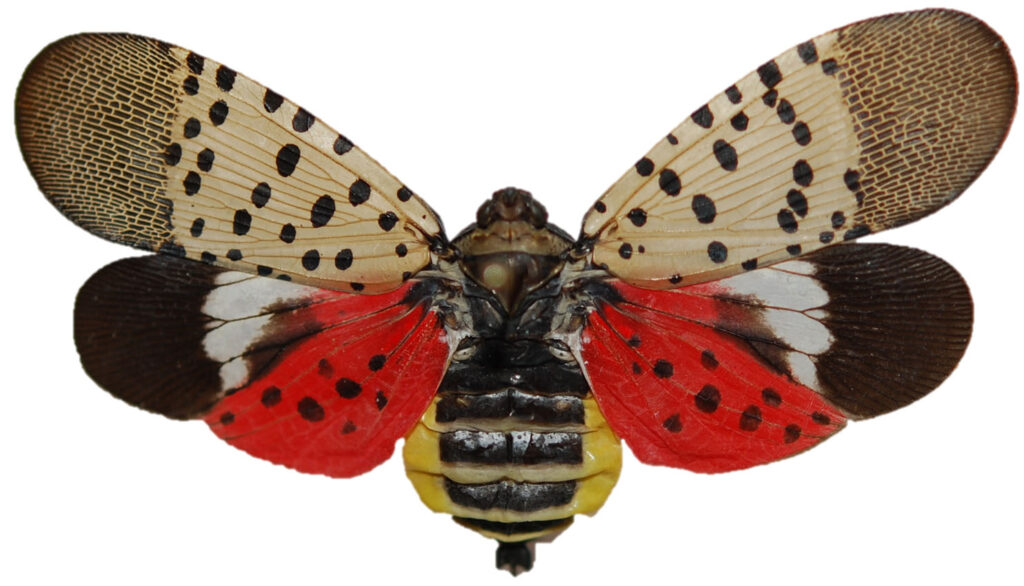Scientists have discovered sizable diversity of pathogenic Phytophthora species in Europe, specifically in the Alps of northeastern Italy and western Slovenija. They have also named a new species, and noted the need to change the definition of species previously named. See Bregant et al. – full citation at the end of this blog – open access!
Two of its findings are especially important for the US
First, the authors document the vulnerability of alpine areas to 18 Phythophthora species. Most of the plant hosts they studied have congenerics in mountainous areas of North America: Acer, Alnus, Betula, Fagus, Fragaria, Fraxinus, Ilex, Juniperus, Larix, Lonicera, Lycopodium, Pinus, Populus, Quercus, Rhododendron, Rubus, Salix, Sorbus, Taxus, and Vaccinium.
Second, the paper discusses how junipers are at particular risk. I remind you that P. austrocedrii has recently been detected in nurseries in Ohio and Oregon. This is another non-native Phythophthora that attacks junipers. I hope authorities are actively seeking to determine whether P. austrocedrii is present in nurseries or natural systems in other parts of the country.
The genus Phytophthora includes many serious plant pathogens, from the one that caused the disastrous potato blight of Ireland (Phytophthora infestans) to globally important forest-destroying invasive species, e.g., P. cinnamomi and “sudden oak death” P. ramorum.
Bregant et al. surveyed 33 small tree, shrub, and herbaceous plant species in 54 sites on the Italian island of Sardinia and the Alps of both northeastern Italy and western Slovenija. Altitudes varied from the valley bottom (700 m) to above tree line (2100 m). Sites included typical forests, riparian ecosystems, and heathlands.
The 360 isolates taken from 397 samples belonged to 17 known Phytophthora species. Some species are widespread and well-known, e.g., P. pseudosyringae. Three isolates belonged to a putative new species described by Bregant et al. – Phytophthora pseudogregata sp. nov. This total of 18 taxa was unexpectedly high. Many of the species are able to cause aerial infections via production of caducous sporangia. These can infect various organs of the plant host: fruits, leaves, shoots, twigs and branches; and cause necrosis and rots. They detected 56 new host–pathogen associations. All are listed, by type of host, in Tables 4 – 6 of the paper.
The surprising diversity and detection of taxa previously described in Australia (see below) illustrate scientists’ still poor understanding of this genus. They also confirm fears that the global phytosanitary system is unable control intercontinental movement of Phytophthora.
The authors express concern because Alpine and subalpine regions are important hotspots for floral biodiversity. The great variation in altitude, aspect, moisture regimes, etc. – including extreme conditions – results in many different habitats on small spatial scales, with large numbers of both plant species and endemics in very confined spaces. The pathogens they discovered are spreading and compromising the biodiversity of these ecologically fragile habitats.
The authors say their study emphasizes the need to assess the full diversity of Phytophthora species and the factors driving the emergence and local spread of these invasive pathogens. They specify studying the Phytophthora communities on fallen leaves to evaluate host specificity, geographic distribution and survival strategies of the main Phytophthora species detected in this study. They report that scientists are currently mapping the distribution of the new species, P. pseudogregata, in the Alpine habitats and trying to establish its natural host range.
Bregant et al. point out that increased scientific interest over the last 30 years has led to discovery of several previously unknown Phytophthora species and pathogen-host associations. They note that all but two of the taxa in one taxonomic grouping, Sub-clade 6b, have been described in the last 12 years. The majority of taxa have been described from forest ecosystems. This trend is depicted in Figure 8 of the article. This figure also displays which species were isolated from nurseries, agricultural systems, and forest ecosystems.
Results by Plant Type – Disease incidence was highest in shrub vegetation, alpine heathlands and along the mountain riparian systems. The most impacted ecosystems were heathlands dominated by common juniper & blueberry, and riparian systems dominated by alders. In these ecosystems, the Phytophthora-caused outbreaks had reached epidemic levels trend with a high mortality rate. On shrubs and heath formations, disease was initially observed in small areas and progressively spread in a concentric manner affecting more plant species.
Hosts and Diseases – Table 3 in the article lists the 33 host plant species, briefly describes the symptoms, and in some cases provides incidence and mortality rates. Those hosts described as suffering “sudden death” included Alnus viridis, Calluna vulgaris, Genista corsica, Juniperus communis, Lycopodium clavatum, Pinus mugo,Rhododendron ferrugineum, Salix alpine, Vaccinium myrtillus and Vaccinium vitis-idaea
Role of P. pseudosyringae – The most common and widespread species detected was P. pseudosyringae. It constituted more than half of the isolates (201 of the 360). Also, it infected the highest number of hosts (25 out of 33, including all three plant types). It was isolated at 36 of the 54 sites distributed throughout all geographic regions. Seventeen of the host–pathogen associations were new to science. (See Tables 4-6, in the paper.)
P. pseudosyringae dominated disease agents in the shrub community, especially among high-altitude shrubs and heaths, e.g., blueberry, dwarf pine, juniper, rhododendron, and alpine willows. Bregant et al. note that these shrubs are extremely low-growing (an adaptation to high elevation conditions). This form might favor attack by Phytophthora sporangia and zoospores present in fallen leaves. Vaccinium myrtillus suffers particularly severe disease – as previously reported in Ireland. In their laboratory studies, Bregant et al. found P. pseudosyringae to be highly aggresse on common juniper (Juniperus communis), producing wood necrosis and shoot blight only four weeks after inoculation.
The importance of P. pseudosyringae in mountainous regions has been found in previous studies in Asia, Europe, and North and South America. However, the authors call for further study of certain aspects of the species. These regard infectivity and survival of the species’ sporangia in infected tissues fallen to the ground; and the ability of oospores to persist for years in environments subject to extreme low temperatures. The former could increase the risk of outbreaks and promote faster disease progression.
The authors suggest P. pseudosyringae’s survival stems from its production of very large and thick-walled chlamydospores. This reported feature is in contradiction with the original species description, which prompts Bregant et al. to call for a correction.
Other Species, Old and New – P. cactorum was the only Phytophthora species other than P. pseudosyringae detected on all three types of hosts (small trees, shrubs, and herbaceous plants). Phytophthora plurivora was the second-most isolated species. It was detected on 12 hosts in 24 sites.
The new putative species — Phytophthora pseudogregata sp. nov. – was detected on Alnus viridis, Juniperus communis, and Rhododendron ferrugineum. As noted above, scientists are now testing whether other plant species are also hosts. It was detected at two sites in Italy — Borso del Grappa and San Nicolò di Comelico; and one site in Slovenija.
Diseases of Juniper – Koch’s postulates have been fulfilled, demonstrating that eight Phytophthora species – the new P. pseudogregata sp. nov. as well as P. acerina, P. bilorang, P. gonapodyides, P. plurivora, P. pseudocryptogea, P. pseudosyringae, P. rosacearum – are pathogenic on common juniper (Juniperus communis). The lesions caused by P. pseudosyringae were significantly larger than those caused by other species. Lesions caused by P. pseudosyringae, P. plurivora and acerina progressively girdled the twigs causing shoot blight, browned foliage & wilting symptoms.
Most Threatening Phytophthora clades – The most-frequently isolated Phytophthora species belong mainly to clades 1 and 3 – including P. pseudosyringae. Bregant et al. say these species have several advantages for surviving in mountainous ecosystems: they produce caducous sporangia useful for aerial infections and they tolerate relatively low temperatures. Twoother species in clade 3 were isolated only from the mountains of Sardinia. One, P. psychrophila, was isolated from bleeding cankers on an oak species, Quercus pubescens. Its geographic distribution and impact are still unknown. A second species, P. ilicis, is a well-known pathogen on various hollies in Europe and North America.
Four species belonging to subclade 1a were isolated in the Alps of northeastern Italy and Slovenija. P. cactorum is a widespread polyphagous pathogen found from tropical to temperate climates. It has been responsible for severe diseases on agricultural crops and forest trees. Its occurrence in cold areas has recently been reported in Europe and Australia. The recently described P. alpina has the highest ability to survive in extremely cold conditions. It was detected on four hosts – Alnus viridis, Lonicera alpigena, Vaccinium myrtillus, and V. vitis-idaea.
Some species, e.g., P. hedraiandra and P. idaei, were reported for the first time in natural ecosystems in Europe. They have previously been linked to root and foliar disease in agricultural and ornamental nurseries.
The second-most common species in the Bregant et al. study, P. plurivora, was isolated from 54 symptomatic samples from 12 plant species; eight of the hosts are new. It is common in forest ecosystems of Central Europe – which is now considered to be its region of origin. Little is known about the closely related P. acerina. To date, the latter has been detected widely in agricultural systems, nurseries, forests, and ornamental trees in northern Italy and Sardinia. It is much more rarely found elsewhere. Both P. acerina and P. plurivora are already known to be primary pathogens involved in decline of common and grey alder in Italy.
Five of the Phytophthora species in this study, including the new species P. pseudogregata, are in Clade 6. These include pathogens very common in European forests, e.g., P. bilorbang and P. gonapodyides. Others have more limited or still unknown distributions, e.g., P. amnicola and P. rosacearum. These five species’ ability to cause aerial infections on mountain vegetation might warrant re-evaluation of the reputation of species in this clade being saprophytes or only occasional weak opportunistic pathogens.
P. pseudogregata – in sub-clade 6a – was originally described in 2011 in wet native forests in Australia and on dying alpine heathland vegetation in Tasmania. It has recently been reported in the Czech Republic and Finland. The related P. gibbosa is known to occur only in Australia, where it is associated with dying native vegetation on seasonally wet sites.
Two species of clade 8 — P. kelmanii & P. syringae — have a very limited distribution. A third – P. pseudocryptogea — is widespread in Italian ecosystems from Mediterranean areas to the tree line in the Dolomites. One species from clade 7 (P. cambivora) isolated, mainly from stem bleeding cankers of small trees and shrubs. It has two mating types; bothoccurr in the Alps of northeastern Italy and neighboring Slovenija — on Alnus incana, Laburnum alpinum and Sorbus aucuparia.
SOURCE
Bregant, C., G. Rossetto, L. Meli, N. Sasso, L. Montecchio, A. Brglez, B. Piškur, N. Ogris, L. Maddau, B.T. Linaldeddu. 2024. Diversity of Phytophthora Species Involved in New Diseases of Mountain Vegetation in Europe with the Description of Phytophthora pseudogregata sp. nov. Forests 2023, 14, 1515. https://doi.org/10.3390/f14081515 https://www.mdpi.com/journal/forests
Posted by Faith Campbell
We welcome comments that supplement or correct factual information, suggest new approaches, or promote thoughtful consideration. We post comments that disagree with us — but not those we judge to be not civil or inflammatory.
For a detailed discussion of the policies and practices that have allowed these pests to enter and spread – and that do not promote effective restoration strategies – review the Fading Forests report at https://treeimprovement.tennessee.edu/
or





